March 6 - 12, 2022: Issue 529
IPCC Sixth Assessment Report - Climate Change 2022: Impacts, Adaptation And Vulnerability
The IPCC has finalised the second part of the Sixth Assessment Report, Climate Change 2022: Impacts, Adaptation and Vulnerability, the Working Group II contribution to the Sixth Assessment Report. It was finalised on February 27th 2022 during the 12th Session of Working Group II and 55th Session of the IPCC.
The Sixth Assessment Report consists of contributions from each of the three IPCC Working Groups and a Synthesis Report (SYR), which integrates the Working Group contributions and the Special Reports produced in the cycle. The meeting to draft the outline of the Sixth Assessment Report took place in Addis Ababa (Ethiopia) in May 2017. The draft outlines were approved by the 46th Session of the Panel in September 2017. The First-Order Draft of the Working Group II contribution to AR6 underwent an expert review from 18 October to 13 December 2019. The Second-Order Draft was reviewed by experts and governments from 4 December 2020 to 29 January 2021. The Final Government Distribution of the final draft of the report and Government Review of the Summary for Policymakers took place from 1 October to 26 November 2021.
The Working Group II contribution was considered during the 55th Session of the IPCC and the 12th Session of the Working Group II from 14 to 27 February 2022. The Summary for Policymakers was released during a press conference on 28 February 2022.
The Working Group II contribution to the Sixth Assessment Report assesses the impacts of climate change, looking at ecosystems, biodiversity, and human communities at global and regional levels. It also reviews vulnerabilities and the capacities and limits of the natural world and human societies to adapt to climate change.
Made accessible and presented in 16 Chapters at: https://www.ipcc.ch/report/ar6/wg2/ - all sections are relevant to Australians, and particularly CHAPTER 11 - Australasia. Chapter 11 assesses climate change impacts and risks, vulnerability as well as barriers and options for adaptation and climate resilient development in Australia and New Zealand.
One extract;
Climate impacts are cascading and compounding across sectors and socio-economic and natural systems (high confidence). Complex connections are generating new types of risks, exacerbating existing stressors and constraining adaptation options. An example is the impacts that cascade between interdependent systems and infrastructure in cities and settlements. Another example is the 2019-2020 south eastern Australian wildfires which burned 5.8 to 8.1 million hectares, with 114 listed threatened species losing at least half of their habitat and 49 losing over 80%, over 3,000 houses destroyed, 33 people killed, a further 429 deaths and 3230 hospitalizations due to cardiovascular or respiratory conditions, $1.95 billion in health costs, $2.3 billion in insured losses, and $3.6 billion in losses for tourism, hospitality, agriculture and forestry. [1.]
Further:
Key risks that have potential to be severe but can be reduced substantially by rapid, large-scale and effective mitigation and adaptation:
Transition or collapse of alpine ash, snowgum woodland, pencil pine and northern jarrah forests in southern Australia due to hotter and drier conditions with more fires, e.g. declining rainfall in southern Australia over the past 30 years has led to drought-induced canopy dieback across a range of forest and woodland types, and death of fire-sensitive tree species due to unprecedented wildfires.
Loss of kelp forests in southern Australia and southeast New Zealand due to ocean warming, marine heatwaves and overgrazing by climate-driven range extensions of herbivore fish and urchins, e.g. less than 10% of giant kelp in Tasmania was remaining by 2011 due to ocean warming.
Loss of natural and human systems in low-lying coastal areas due to sea-level rise, e.g. for 0.5 m sea level rise, the value of buildings in New Zealand exposed to 1-in-100 year coastal inundation could increase by NZ$12.75 billion and the current 1-in-100 year flood in Australia could occur several times a year.
Disruption and decline in agricultural production and increased stress in rural communities in south western, southern and eastern mainland Australia due to hotter and drier conditions, e.g. by 2050, a decline in median wheat yields of up to 30% in south-west Australia and up to 15% in South Australia, and increased heat stress in livestock by 31–42 days per year.
Increase in heat-related mortality and morbidity for people and wildlife in Australia due to heatwaves, 2 e.g. heat-related excess deaths in Melbourne, Sydney and Brisbane are projected to increase by about 3 300/year (low emission pathway) to 600/year (high emission pathway) during 2031-2080 relative to 4 142/year during 1971-2020. [1.]
1. IPCC, 2022: Climate Change 2022: Impacts, Adaptation, and Vulnerability. Contribution of Working Group II to the Sixth Assessment Report of the Intergovernmental Panel on Climate Change [H.-O. Pörtner, D.C. Roberts, M. Tignor, E.S. Poloczanska, K. Mintenbeck, A. Alegría, M. Craig, S. Langsdorf, S. Löschke, V. Möller, A. Okem, B. Rama (eds.)]. Cambridge University Press. In Press.
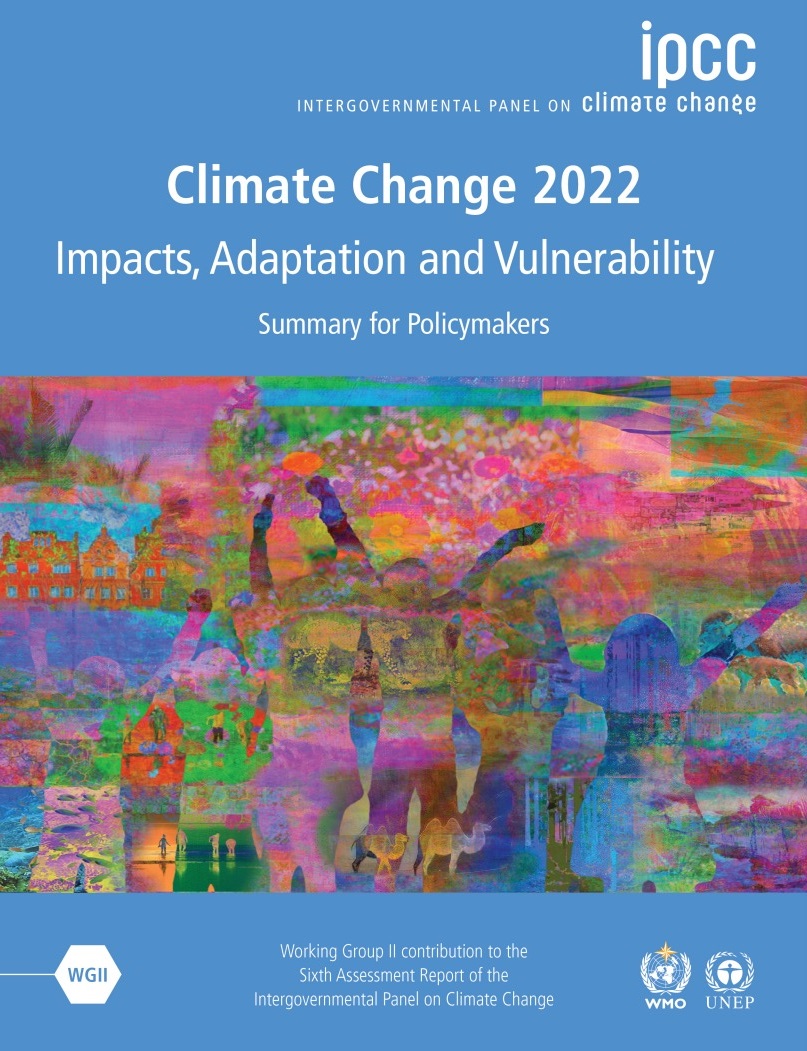
The Intergovernmental Panel on Climate Change (IPCC) is the international body for assessing the science related to climate change. The IPCC was set up in 1988 by the World Meteorological Organization (WMO) and United Nations Environment Programme (UNEP) to provide policymakers with regular assessments of the scientific basis of climate change, its impacts and future risks, and options for adaptation and mitigation.
IPCC assessments provide a scientific basis for governments at all levels to develop climate related policies, and they underlie negotiations at the UN Climate Conference – the United Nations Framework Convention on Climate Change (UNFCCC). The assessments are policy-relevant but not policy prescriptive: they may present projections of future climate change based on different scenarios and the risks that climate change poses and discuss the implications of response options, but they do not tell policymakers what actions to take.
The IPCC embodies a unique opportunity to provide rigorous and balanced scientific information to decision-makers because of its scientific and intergovernmental nature. Participation in the IPCC is open to all member countries of the WMO and United Nations. It currently has 195 members. The Panel, made up of representatives of the member states, meets in Plenary Sessions to take major decisions. The IPCC Bureau, elected by member governments, provides guidance to the Panel on the scientific and technical aspects of the Panel’s work and advises the Panel on related management and strategic issues.
All Chapters and the full report (PDF: 280 MB) are available at: https://www.ipcc.ch/report/ar6/wg2/
Below run articles published this week by Australian and New Zealand Scientists and Academics on content from the IPCC, 2022: Climate Change 2022: Impacts, Adaptation, and Vulnerability. Contribution of Working Group II to the Sixth Assessment Report of the Intergovernmental Panel on Climate Change
New IPCC report shows Australia is at real risk from climate change, with impacts worsening, future risks high, and wide-ranging adaptation needed
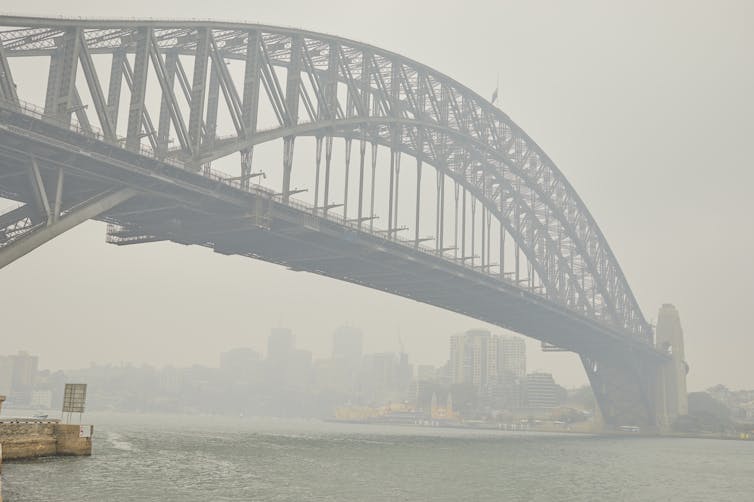
Climatic trends, extreme conditions and sea level rise are already hitting many of Australia’s ecosystems, industries and cities hard.
As climate change intensifies, we are now seeing cascading and compounding impacts and risks, including where extreme events coincide. These are placing even greater pressure on our ability to respond.
While the work of adaptation has begun, we have found the progress is uneven and insufficient, given the risks we face.
These findings are from our work as co-authors of the new Australia and New Zealand chapter in the Intergovernmental Panel on Climate Change 6th Assessment Report on Impacts, Vulnerability and Adaptation, released today.
What Does The Report Mean For Australia?
This new report represents the efforts of over 270 climate change experts to review and synthesise the latest information. These authors collectively examined over 34,000 peer reviewed publications about how climate change is affecting ecosystems and societies, future risks, adaptation enablers and limits, and links to climate resilient development.
Climate change is bringing hotter temperatures, more dangerous fire weather, more droughts and floods, higher sea levels, and drier winter and spring months to southern and eastern Australia, amongst other changes. These changes are increasing the pressure on our natural environment, settlements, infrastructure and economic sectors including agriculture, finance and tourism.
In low-lying areas along our coasts, where so many Australians live, homes, infrastructure and ecosystems will be lost to the rising sea if mitigation and adaptation are inadequate.
For our farmers and the agrifood sector, climate change brings unwelcome stresses and disruptions, making it more challenging to produce food profitably and sustainably. Intensified heat and drought will place yet more stress on our rural communities, particularly in Australia’s south-west, south and east.
Australians will experience more deaths and ill health from heatwaves, as will our wildlife.
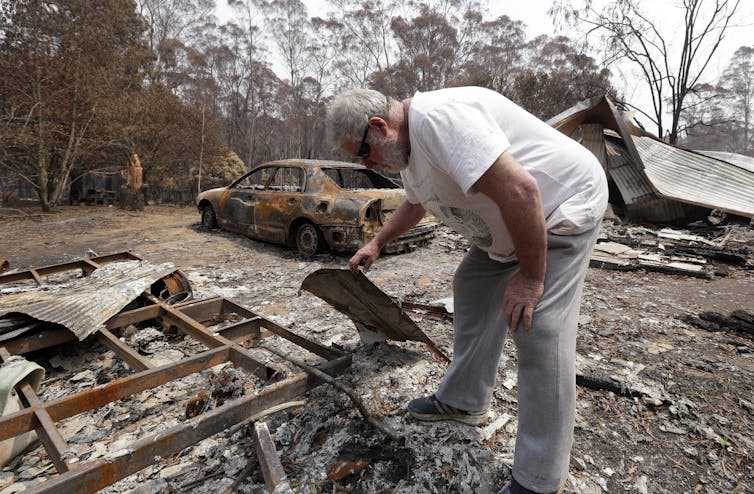
The Threat Of Cascading Impacts
Unfortunately, that’s not all we have to contend with. We have identified two new types of climate-related risk.
The first are the cascading, compounding and aggregate impacts on our cities and towns, roads, supply-chains and services, emerging from the interaction of disasters like wildfires, floods, droughts, heatwaves, storms and sea-level rise. Think of the rolling impacts from the Black Summer bushfires, which killed people and wildlife, destroyed homes and resulted in major economic losses for tourism, farming and forestry. Or think of the ongoing floods in New South Wales and Queensland.
The second is the slow speed at which governments and institutions are moving to deal with these changing risks, undermining the system-wide adaptation needed. What does this mean in practice? That the scale and scope of what we can expect to see happen may overwhelm our capacity to respond to these impacts – unless we address these risks quickly and strategically.
Climate impacts are powerfully and unevenly amplified by existing stresses affecting our environment and people. For instance, Australia’s coral reefs already face threats from pollution and invasive species. Climate change acts as a threat multiplier.
Climate change will pose more of a threat to vulnerable Australians, such as those with inadequate health care, poor quality housing and unstable employment.
We examined how much the projected damage could be reduced through better adaptation such as changes in policy, more effective planning and technical solutions.
Our ecosystems most at risk are our world-famous coral reefs and the huge biodiversity and ecosystem services they provide. Steadily warming oceans and sudden marine heatwaves have already pushed many areas to the edge.
The Great Barrier Reef is already at a very high risk of crossing a critical threshold where further warming may cause irreversible damage. Between 2016 and 2020, three marine heatwaves struck the Great Barrier Reef, causing major coral bleaching and death. Once the coral is gone, many of the fish and invertebrates do not survive.
In typical conditions, it takes a minimum of a decade for the fastest growing corals to recover from a single bleaching event. We are no longer in typical conditions. Warming beyond 1.5℃ would see marine heatwaves strike more often. Bleaching will go well beyond the reef’s natural ability to regenerate.

What Does Adaptation Look Like?
If we fail to address underlying vulnerabilities in our society and fail to reduce climate-related risks, we will make climate change impacts even worse and undermine our capacity to adapt, well into the future.
But if we step up adaptation now, we will see benefits both in the near- and long-term. This includes practicalities like making sure all strategic planning, land use planning and infrastructure developments take complex climate change risks into account – in a systematic, rather than siloed, narrowly focused, way.
On the positive side, Australia’s adaptation efforts have increased in ambition, scope and implementation across governments, non-government organisations, businesses and communities since the last IPCC assessment in 2014.
In recent years, Australia has created a government agency for recovery and resilience, a disaster risk reduction framework, and national adaptation guidance.
States and territories have introduced climate adaptation strategies, with some evidence of implementation. Local governments, regions, communities and associated alliances are becoming more active in adaptation. In the private sector, there is some rapid work underway to address climate risk and disclosure.
Laudable though this progress is, we found that progress on adaptation is distinctly uneven. That’s due to implementation barriers as well as limits to adaptive capacity. Barriers we found include competing objectives, divergent risk perceptions and values, knowledge constraints, inconsistent information, fear of litigation, up-front costs, and lack of engagement, trust and resources.
If we are to get better at adaptation, we have to shift from reactive to anticipatory planning, to better plan for and reduce climate-related risks. Systemic risks demand systemic adaptation.
We found there was a great deal to be gained from better integration and coordination between levels of government and sectors through more effective policy alignment and more inclusive and collaborative institutional arrangements.
Australia would benefit from a national risk assessment and a national climate adaptation implementation plan. Other ways to enable more effective adaptation include serious and stable funding and finance mechanisms, and nationally consistent and accessible information and decision-support tools.
The way we go about adaptation is also important. Climate planning that promotes inclusive governance, collective action and mutual support can make the process of change easier, fairer and more effective.
Supporting Aboriginal and Torres Strait Islander peoples and their institutions, knowledge, values and self-determination is especially important. The knowledge, skills and experience held by Aboriginal and Torres Strait Islander peoples is relevant to climate change adaptation across society.
The Best Time To Act Is Now
If we delay introducing effective adaptation methods and significant global emission reduction, the damage caused will be more expensive and require far greater change. We need robust, timely adaptation, and deep cuts to emissions.
That’s to have our best chance of keeping global warming to 1.5-2℃ and reduce the challenges of adaptation.
Although the climate impacts and risks we face are increasingly severe, it is by no means too late to avert the worst outcomes.
It is still possible to move to a pathway of “climate resilient development” in which we work together to rapidly contain global warming, adapt effectively and help secure a better future for all.![]()
Brendan Mackey, Director of the Griffith Climate Change Response Program, Griffith University; Francis Chiew, Senior Principal Research Scientist, CSIRO; Gretta Pecl, Professor, ARC Future Fellow & Editor in Chief (Reviews in Fish Biology & Fisheries), University of Tasmania; Kevin Hennessy, Principal Research Scientist, CSIRO Oceans and Atmosphere, CSIRO; Lauren Rickards, Professor, RMIT University; Mark Howden, Director, ANU Institute for Climate, Energy and Disaster Solutions, Australian National University; Nigel Tapper, Professor, Monash University; Nina Lansbury, Senior Lecturer, School of Public Health, The University of Queensland, and Uday Nidumolu, Principal Research Scientist, CSIRO
This article is republished from The Conversation under a Creative Commons license. Read the original article.
IPCC report: Coastal cities are sentinels for climate change. It’s where our focus should be as we prepare for inevitable impacts
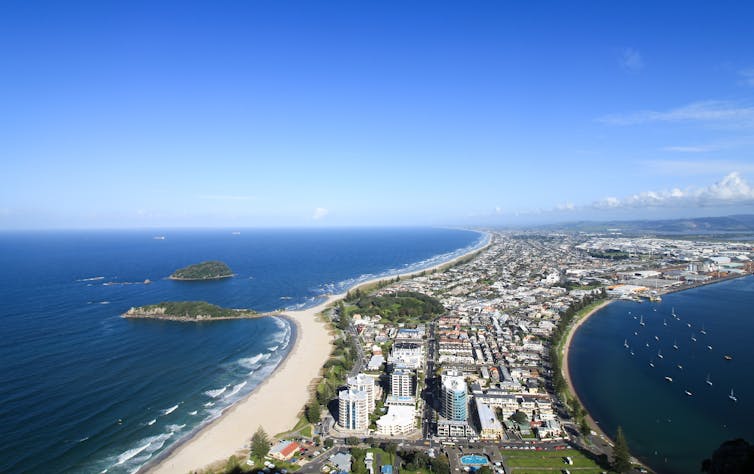
Coastal cities and settlements are on the climate change frontline. They are our first line of defence, facing some of the highest climate risks. But they are also where transformative climate-resilient development can happen.
This is one of the key findings in the Intergovernmental Panel on Climate Change (IPCC) Sixth Assessment Report on Impacts, Adaptation and Vulnerability, released overnight.
I have contributed to the section on coastal cities, which concludes:
Realising global aspirations for climate resilient development depends on the extent to which coastal cities and settlements […] close the coastal adaptation gap, and take urgent action to mitigate greenhouse gas emissions.
This is especially relevant for Aotearoa New Zealand and Australia because our people, the things we value and our economies and livelihoods are concentrated along the shoreline.
Resilient and sustainable coastal livelihoods depend on maintaining diverse, productive and healthy coastal ecosystems in the face of global change.
Severe Disruption To Coastal Livelihoods Is Inevitable
A large proportion of the world’s population and critical infrastructure is already concentrated along shorelines. Nearly 11% of the global population, about 896 million people, live on low-elevation coasts directly exposed to climate and non-climate coastal hazards. These cities and settlements are growing rapidly as people move to the coast.
Prospects for climate-resilient development are dismal because of accelerating sea-level rise and rapidly worsening climate-driven risks in a warming world. But coastal settlements nonetheless play a key role in advancing climate-resilient development because they are critical for national economies and global maritime trade.
The IPCC’s earlier report showed that global mean sea level has risen faster since 1900 than during any preceding century in at least the last 3000 years. This latest report reiterates that unavoidable sea-level rise will cause cascading and compounding impacts. This includes the loss of coastal ecosystems and their services, groundwater salinisation, flooding and damage to coastal infrastructure.
Globally, we expect about a billion people will be at risk from coast-specific climate hazards under all emissions scenarios. In coming decades, the risk of coastal flooding will increase rapidly. It could be two to three orders of magnitude greater by 2100, without effective adaptation and mitigation.
Historically rare extreme sea-level events (that occurred once in 100 years in the past) will happen annually by 2100. Some atolls will become uninhabitable by 2050. If global mean sea level rises by 0.15m relative to current levels, the population at risk of a 100-year coastal flood increases by about 20%. This number doubles at 0.75m and triples at 1.4m, assuming present-day population and protection.
Sea-Level Rise As Existential Threat
By 2100, the value of global assets within one-in-100-year coastal floodplains is projected to reach US$7.9 to $12.7 trillion under a mid-range emissions scenario. In a high-emissions world, it could rise up to $14.2 trillion.
These impacts will be felt well beyond coastal cities. Damage to ports could severely compromise global supply chains and maritime trade, with potentially major geo-political and economic ramifications.
Sea-level rise constitutes a chronic adaptation challenge. It requires dealing with slow-onset changes in parallel with increasing frequency and magnitude of extreme events that will escalate in coming decades. At centennial timescales, projected sea-level rise constitutes an existential threat for many island nations, low-lying coastal zones and their communities, infrastructure and cultural heritage.
Even if we stabilise global warming at 2–2.5℃ above pre-industrial levels, coastlines will continue to reshape over millennia. This will affect at least 25 megacities and, by 2100, inundate low-lying areas currently home to 0.6–1.3 billion people.
Global Aspirations For Climate-Resilient Development
Extensive adaptation planning has taken place since the IPCC’s previous assessment. But widespread implementation is lacking and this has created a pronounced “coastal adaptation gap”.
We need to close this gap quickly. The report finds we already have effective ways to prepare for impacts and to cut emissions, but they must be embedded in development planning to reduce vulnerability and restore ecosystems.
This depends on governments, civil society and the private sector making inclusive choices that prioritise risk reduction, equity and justice. We will also need to integrate decision-making processes, finance and actions across all governance levels and timeframes.
International cooperation will be crucial. We will need to strengthen partnerships with traditionally marginalised groups, including youth, Indigenous peoples, local communities and ethnic minorities.
This will require us to reconcile divergent interests, values and worldviews. We need to reduce structural vulnerabilities to climate change through carefully designed and implemented legal and policy interventions, from the local to global level, that take into account prevailing inequities.
Rights-based approaches that focus on capacity building, meaningful participation of the most vulnerable groups and their access to key resources, including finance, play a crucial role in reducing climate risk and enabling transformative adaptation.
Planning and decision-making processes should identify “low regrets” options that allow us to reduce emissions and prepare for impacts in the face of deep uncertainty and contestation. Governance for climate-resilient development is most effective when supported by formal and informal institutions and practices that remain flexible enough to respond to emergent risks.
As sentinels on the climate change frontline, coastal cities and settlements play a pivotal role in global efforts to adapt to unfolding climate change impacts and to navigate perilous times ahead.
This report deepens the findings of the IPCC’s earlier report about the world’s oceans and icescapes. It identifies five core conditions for coastal cities and settlements to fulfil their role in climate-resilient development.
Take a long-term perspective when making short-term decisions by keeping options open to adjust as sea-level rises and avoiding new development in high-risk locations
enable more effective coordination by establishing networks across different governance levels and policy domains to build trust and legitimise decisions
reduce social and climate injustice by taking historical conditions, including past emissions, and prevailing political realities into account and proactively reducing vulnerability and inequity
strengthen local democracy by facilitating participation, involving stakeholders early and consistently through to implementation, with particular attention to engaging Indigenous people and marginalised and vulnerable groups
develop governance capabilities to tackle complex problems by drawing on multiple knowledge systems, including Indigenous, local and scientific knowledge to co-design more acceptable and effective responses.

Bruce Glavovic, Professor, Massey University
This article is republished from The Conversation under a Creative Commons license. Read the original article.
Mass starvation, extinctions, disasters: the new IPCC report’s grim predictions, and why adaptation efforts are falling behind
Mark Howden, Australian National University; Joy Pereira, Universiti Kebangsaan Malaysia (National University of Malaysia), and Roberto Sánchez, Colegio de la Frontera NorteEven if we manage to stop the planet warming beyond 1.5℃ this century, we will still see profound impacts to billions of people on every continent and in every sector, and the window to adapt is narrowing quickly. These are among the disturbing findings of the latest report from the Intergovernmental Panel on Climate Change (IPCC).
At 1.5℃ warming above pre-industrial levels, the new report projects that, for example, children under 12 will experience a fourfold increase in natural disasters in their lifetime, and up to 14% of all species assessed will likely face a very high risk of extinction. This is our best-case scenario.
Impacts such as these will not be evenly spread, with countries in Africa, Asia and low-lying island nations set to be hardest hit. Yet these nations are among the least able to adapt.
We are three vice-chairs of the IPCC, and helped guide the hundreds of scientists worldwide who authored this report. As the second in a set of three, this report gives the most up-to-date synthesis of what we know about the impacts of climate change, and how to adapt to them.
The previous report, published last year, confirmed Earth has already warmed by 1.09℃ since pre-industrial times as a result of human activity.
Adaptation, such as through sustainable building development, can help humanity manage the increasing risks. But adaptation alone will not be enough, it must be paired with a drastic and urgent reduction in global greenhouse emissions if we’re to avert the extraordinary crises that unmitigated planetary heating would bring.
Cascading Climate Crises
As the peak climate science body of the United Nations and the World Meteorological Organization, the IPCC is the global authority on climate change.
Our new report paints a worrying picture of climate impacts already affecting the lives of billions of people, our economies and the environment, from the poles to the Equator and from the tops of mountains to the ocean floor.
Global warming of 1.09℃ has already caused widespread impacts globally. In the past several years, we’ve seen enormous wildfires sweep across Australia, Chile, the United States and Greece. We’ve seen global, back-to-back mass coral bleaching events. And we’ve seen unprecedented heatwaves and cold events such as in British Columbia, Canada and in Texas, US.
Even if we manage to reduce global emissions and meet the Paris Agreement target of only temporarily exceeding 1.5℃ this century, this could still have severe and potentially irreversible impacts, although less so than for higher temperature rises.
This includes species extinction, especially in low-lying islands and mountainous areas. Ice sheets will further break down in Greenland, West Antarctica and now even East Antarctica, raising global sea levels about half a metre or more by 2100.
Every small increase in warming will result in escalating losses and damages across many systems. For example, the report found:
under a high-emissions scenario (where global emissions continue unabated), more frequent and extreme disasters will lead to over 250,000 unnecessary deaths each year worldwide.
up to 3 billion people are projected to experience chronic water scarcity due to droughts at 2℃ warming, and up to 4 billion at 4℃ warming, mostly across the subtropics to mid-latitudes
projected flood damages may be up to two times higher at 2℃ warming and up to 3.9 times higher at 3℃, when compared with damages at 1.5℃
up to 18% of all those species assessed on land will be at high risk of extinction if the world warms 2℃ by 2100. If the world warms up to 4℃, roughly every second plant or animal species assessed will be threatened
even warming below 1.6℃ will see 8% of today’s farmland become climatically unsuitable for current activities by 2100.
Importantly, the interplay between these various impacts can potentially cascade into further risk.
Take Australia’s 2019-20 bushfires as an example. Climate change exacerbated drought and heatwaves, which generated catastrophic fire conditions causing over 18 million hectares to burn.
The drought also reduced water availability for firefighting; the heat exhausted the firefighters in their protective clothing; and the fires generated their own fire weather, spreading the fire faster while also disrupting communications, power networks, and fuel and banking systems – all of which severely hampered the disaster response.
The fires also released huge amounts of carbon dioxide into the atmosphere, adding to warming and future fire risk.
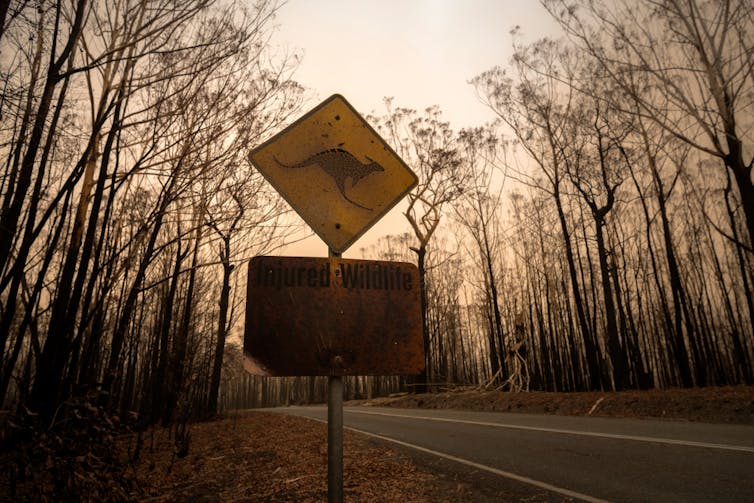
Who Will Be Hit Hardest?
A key message from the report is how climate change increases inequities across the globe. Existing climate change impacts are already disproportionately hitting the poor and disadvantaged.
For example, reductions in food production have been greatest in those areas where poverty is already rife. This pattern is projected to worsen, with significant risk of large-scale food and nutrition insecurity.
Across Africa, for example, the report found climate change has already reduced agricultural productivity growth by 34% since 1961 – more than any other region on the planet. Further warming will shorten growing seasons and the availability of water. In particular, warming above 2℃ will result in significant yield reductions for staple crops across most of the continent.
By 2050, reduced fish harvests could leave up to 70 million people in Africa vulnerable to iron deficiencies, up to 188 million for vitamin A deficiencies, and 285 million for vitamin B12 and omega-3 fatty acids.
Climate change is also a dire threat to lives and livelihoods in small island nations, such as in the Caribbean and Pacific. For example, the report found warming above 1.5℃ will see up to 90% of tropical coral reefs severely damaged. This jumps to 99% of coral reefs for warming over 2℃. Many rely on coral reef ecosystems for their livelihoods, and this will contribute to climate-related displacement, which is expected to increase.
And to rub salt into the wounds, developing nations, communities and people generally play only a negligible role in emitting the greenhouse gases driving the temperature up, with per capita emissions often only a tenth of those in developed nations.
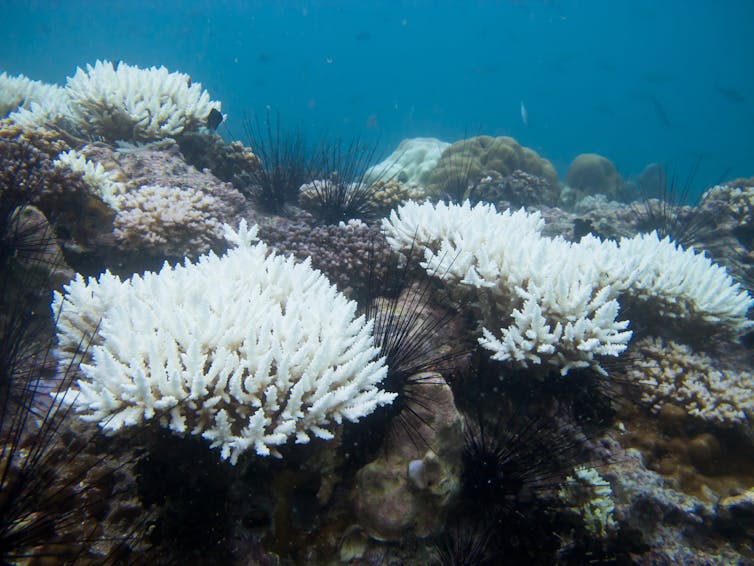
Adapting Isn’t Enough
To avoid the projected mounting losses, we require urgent, accelerated action to adapt to climate change.
There are adaptation options for every region and every sector. These could include removing houses and other infrastructure from floodplains to slow river flows and increase water retention, or improving building standards so our homes are suited to warmer climates.
But the more global warming that occurs, the fewer and less effective these options will likely be. Thus, as climate change proceeds, there will be ever-tightening limits on our capacity to adapt.
For example, in many subtropical and mid-latitude regions such as the Mediterranean, Chile and Mexico, hot temperature and drought conditions are likely to increase. Irrigation is obviously an adaptation option for high-value crops.
However, the likely lower water availability and increased demand across sectors will reduce water allocations, and constrain irrigation options. What’s more, the efficiency of water use will reduce under hotter, dryer conditions with lower relative humidity of the air. This means for a given amount of water, there’ll be less benefit to crop growth or even for other sectors, such as for cooling power stations.
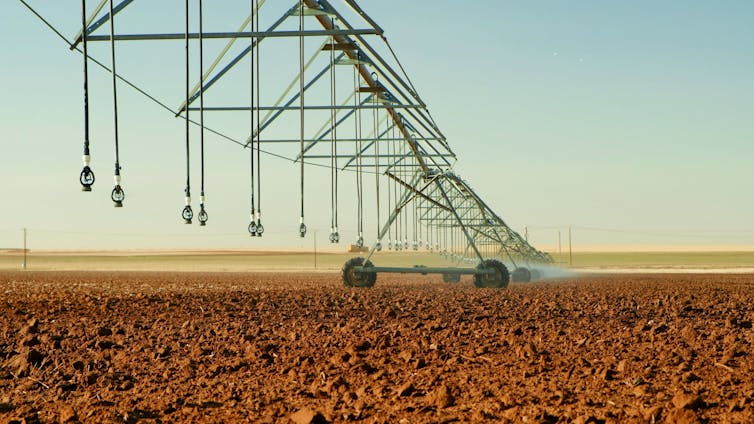
Faster adaptation depends on getting the right support. We need firm political commitment and follow-through, robust institutions with diverse input, research and development which provides new adaptation options, and access to adequate financial resources.
Indeed, developed countries have agreed to mobilise US$100 billion per year to finance adaptation and mitigation in developing countries. But while climate finance is increasing overall, it’s not enough to enable adaptation to keep pace with climate change. Only a tiny fraction (an estimated 4-8%) is targeted at enhancing climate adaptation – most is aimed at emissions reduction.
Even a well-designed and implemented global adaptation program won’t fully address the increased risks from climate change, and so losses and damages will likely mount. Action we take to adapt to climate change will require parallel reductions in greenhouse gas emissions – adaptation cannot do it all.
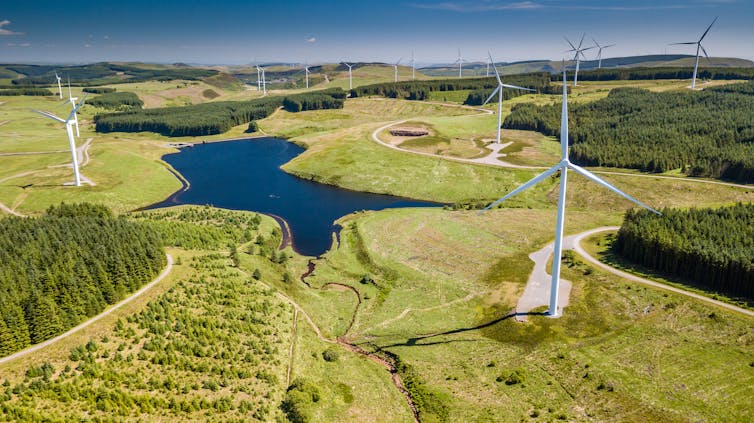
Where possible, adaptation actions should simultaneously reduce net emissions, and reduce climate risk. Clearly, adaptations that increase emissions – such as turning on our air-conditioners if they use fossil-fuel-generated electricity – are self-defeating.
Similarly, emission-reduction activities will increasingly need to adapt to the changing climate.
For example, higher temperatures and lower rainfall projected for southern Australia will lower the amount of carbon forests can soak up, because the forests’ growth rate will reduce and more fires will lead to greater losses. Alongside enhanced fire management, choosing a mix of plant species that are adapted to a warmer climate could help offset some of these effects.
It’s clear reducing global emissions alongside effective adaptation will put us on a trajectory of lower costs and damages. But at a global level, we’re doing neither of these things to the necessary extent. We’re at risk of missing a brief and rapidly closing window to secure an equitable and sustainable future.
![]()
Mark Howden, Director, ANU Institute for Climate, Energy and Disaster Solutions, Australian National University; Joy Pereira, Professor, Universiti Kebangsaan Malaysia (National University of Malaysia), and Roberto Sánchez, Professor, Colegio de la Frontera Norte
This article is republished from The Conversation under a Creative Commons license. Read the original article.
Australia could get to net zero emissions much quicker than 2050 – if our politics was a force for change. Here’s how
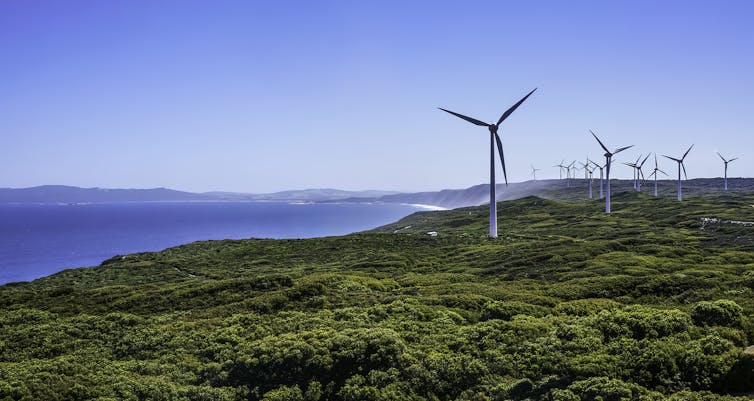
Let’s imagine Australia was able to use politics to work on the single largest threat facing us: climate change.
Our current goal is net zero by 2050. But we could do it much faster. Our modelling shows we could get there by 2035. That’s just 13 years away.
Just think of last week’s audacious bid by tech billionaire Mike Cannon-Brookes to take over our largest emitting company, AGL, and rapidly retire its fossil fuel assets.
You might look at the latest climate news and think it’s too late. This is simply not true. There’s a better future just ahead, if we can seize it.
Getting On With The Job Of Decarbonising
Within 13 years (2035), we could have a near zero emission power grid of firmed renewables powering our society. That same year, houses and apartments could hit near zero emissions, courtesy of new all-electric buildings and retrofits. And agriculture, too, could see significant emissions reductions.
Real progress could come even earlier. Within eight years, electric vehicles could make up 75% of new car sales, with public transport electrified too. Industry – often seen as hard to decarbonise – could halve its emissions by 2030. And Australia could be on the way to becoming a green superpower, courtesy of our wealth of minerals needed for the transition and ability to make green hydrogen.

Electricity: Near Zero Within 13 Years
The way we generate electricity is changing the fastest. Over the last decade, we have tripled the share of renewables in Australia’s generation mix to over 20%.
We have more than enough sun and wind to make the renewable share as high as 80% by 2030, and almost 100% by 2035. We can manage that even though electricity demand is expected to double by 2050.
We even have the renewable resources to produce more electricity than we use, and export the surplus. Tasmania, for example, has legislated a 200% renewable energy target by 2040 – meaning they can export the excess power.
We have the technologies we need for this kind of scale. All we have to do is plan the transition properly, so the wave of cheap renewable power arrives as coal and gas exit. Done right, we’ll all benefit from cheaper power. State governments and operators of the energy market have shown how this can be done.
There will still be mining jobs, as the world demands our green tech minerals such as lithium, cobalt and copper. And we have huge opportunities to benefit from our ever-cheaper renewables through nation-building megaprojects where Australian renewables are sent under the sea to Asia, or converted to green hydrogen and shipped in place of fossil gas exports.
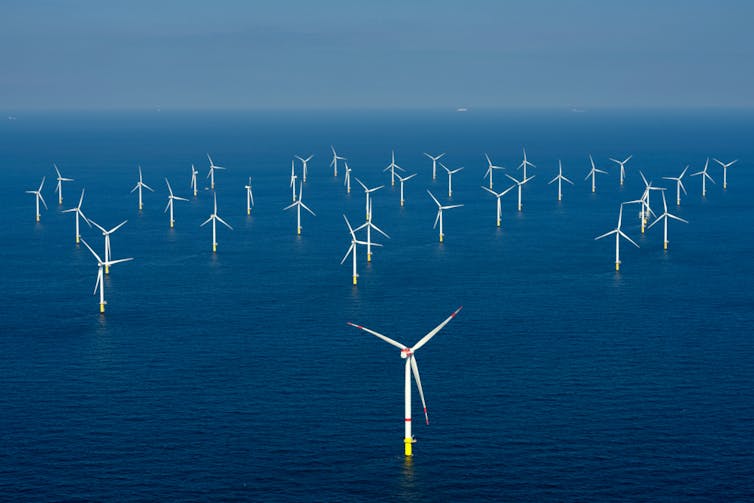
Buildings: Near Zero Within 13 Years, With A Boost To Comfortable Living
As we shift to clean electricity, we unlock emissions reductions across the economy. We’ll see this most clearly in our homes and commercial buildings.
How? Look at the all-electric, 7-star new buildings under construction by some of Australia’s largest property developers. For those of us in older houses, large-scale retrofitting would enable us to reach near zero emissions by 2035 at lowest cost.
The benefit? Lower energy bills and more comfortable living, as we fix the well-known issues with insulation and air leakage. The energy use per Australian household could be halved by 2030 if available technologies are rolled out in Australian markets.
Transport: 75% Of New Cars Electric Within Eight Years
Most technology needed to electrify Australia’s cars, utes and vans is ready to hit the road. If more electric vehicle models became available and we get on a similar timeline to the EU and US, price parity could be reached within four years.
When electric vehicles are price competitive with internal combustion engine models, people will switch. With the right policy and market settings, three in four new cars could be electric by the end of the decade.
In public transport, we could see rapid change. Sydney’s bus fleet will be electrified and the metro rail system powered by renewables this decade. Melbourne’s trams are renewably powered, with electric buses coming too. If taken up across the country, Australia’s public transport network could be transformed by 2030.
Decarbonising the way we transport freight and move long distances will take more work. But zero emissions container ships and battery-powered trains are in the works.

Industry: Emissions Halved Within Eight Years
While industry is often seen as a hard nut to crack, it’s possible to achieve major emissions reductions using known technologies. Our modelling shows industry emissions could be halved by 2030.
How? By rapidly switching to existing technologies to improve material and energy efficiency, while solutions are developed for more difficult emission sources.
A vital first step is to create industrial precincts powered by renewables. It’s already happening in Western Australia and New South Wales.
Australia’s significant competitive advantages in mineral resources and renewable energy mean we could lead the world in establishing green industries.
Green hydrogen prices could drop to A$2/kg by the early 2030s, allowing Australia to become a significant exporter while using hydrogen domestically to power other low emissions export industries like green steel.
Agriculture: Net Zero Is Possible By 2035
Livestock accounts for around 70% of all agricultural emissions. Deployment of solutions like anti-methane technologies and plant-based proteins will create meaningful emissions reductions by 2030.
Research breakthroughs are occurring all the time in this area, and there is a real desire for progress in the industry.
Meat and Livestock Australia is aiming for carbon neutrality by 2030 for Australia’s beef, lamb and goat production. With the right policy signals, this transformation would be within reach.
Natural Resources: Carbon Sinks Will Get Us To Net Zero
Even with these actions, most sectors of the Australian economy will still have residual emissions in 2035. That’s where our vast land area and enviable natural resources can help get us to net zero.
Even now, Australia’s land use, land use change and forestry (LULUCF) sector stores more carbon than it produces.
We can use this sector to “soak up” any residual emissions, through forestry plantations, growing more trees on farms (which also improves productivity) and other carbon farming techniques.
Restoring and preserving wilderness in national parks, mangroves, wetlands, and other landscapes offer further opportunity for carbon sequestration.
Importantly, land isn’t an “easy fix” replacing the need to slash emissions and quickly. We can’t store endless carbon in these natural sinks.

More Ready Than You Think
It is entirely possible for Australia to hit net zero emissions within 13 short years.
It’s a big job. But we can get there, and we’ll reap huge benefits from the switch.
But we need a united front – with businesses, organisations, individuals – and, yes, governments – agreeing to get on with it. Let’s get cracking.![]()
Anna Malos, Australia - Country Lead, ClimateWorks Australia and Simon Graham, Senior Analyst, ClimateWorks Australia
This article is republished from The Conversation under a Creative Commons license. Read the original article.
‘One of the most extreme disasters in colonial Australian history’: climate scientists on the floods and our future risk
Andrew King, The University of Melbourne; Linden Ashcroft, The University of Melbourne, and Sarah Perkins-Kirkpatrick, UNSW SydneyThe deluge dumped on southeast Queensland and northern New South Wales this week has been catastrophic. Floodwaters peaked at around 14.4 metres high in Lismore – two metres higher than the city’s previous record.
So how does this compare to Australia’s previous floods, such as in 2011? And can we expect more frequent floods at this scale under climate change? The answers to questions like these aren’t straightforward.
Climate change doesn’t tell the whole story, as extreme rainfall can occur for a variety of reasons. What’s more, it’s too soon to officially state whether this event is directly linked to climate change, as this would require a formal event attribution study. This can take months or years to produce.
In any case, we do know extreme events like this will occur more frequently in a warmer world. And the rising death toll, ongoing evacuations and destroyed homes make this one of the most extreme natural disasters in colonial Australian history.
How This Compares To Floods In Our Past
The east coast is a common place for heavy rainfall and flooding. The Yugara and Yugarabul people have traditional stories about great floods in the Brisbane river region long before European colonisation, and sediments from floodplains indicate floods as severe as those in 2010–2011 have occurred at least seven times in the past 1,000 years.
Instrumental records and documentary accounts show severe floods have inundated southern Queensland’s cities and towns in the 1820s, early 1840s and 1890s, 1931, 1974 and, of course, in 2010–2011.
Each of these events have been devastating, and record-breaking, depending on which records you’re interested in.
The floods in 1841 and 1893 are considered highest in terms of water levels recorded in Brisbane city, reaching over 8m. Australia’s wettest day on record was also recorded in 1893, when Crohamhurst in the Glasshouse Mountains measured 907 millimetres in one day.
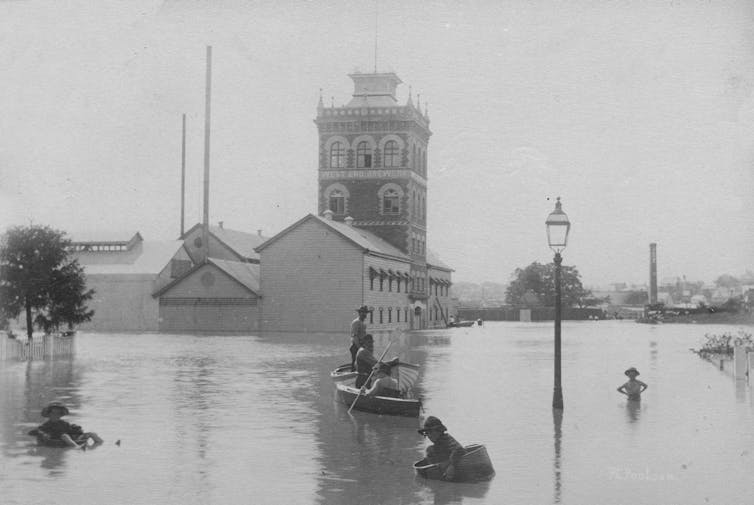
The 1974 event was associated with extreme rainfall totals in many coastal areas, including 314mm in one day in Brisbane, and more than a metre of rainfall was recorded over three days in places such as Mount Tamborine and the northwest of Surfers Paradise.
The 2010–11 flood, while not as severe in terms of extreme rainfall totals, was notable for its inland extent, and was the final act of Australia’s wettest July to December on record.
The current flood has peaked at 3.85m in Brisbane, below the 2010–2011 levels of 4.46m. But it’s breaking records in other areas such as Lismore in northern NSW. The rainfall statistics associated with this event are also nearing the highest on record for many places, possibly due to the slow-moving nature of the associated weather system.
Four of the top six highest rainfall totals in NSW were recorded on 28 February, and Brisbane has just experienced three days of over 200mm. These aren’t the highest daily totals ever recorded in the city, but the first time three days of such intense falls have been documented, in data that go back to 1841.
Disentangling The Role Of Climate Change
When it comes to understanding the role of human-induced climate change in extreme events, there is the temptation to ask the wrong question: “did climate change cause this event?”
Since any extreme event is always a manifestation of climate variability, large weather systems, local-scale weather and climate change, it’s impossible to categorically answer this question with a simple “yes” or “no”.
Instead, the question we should be asking is “did climate change contribute to this event?”
Well, firstly, there has actually been a slight decrease in summer rainfall in southeast Queensland and northeast NSW since the mid-20th century. But, there’s very high variability in rainfall for this region, and La Niña – a natural climate phenonenon associated with wetter weather – often brings flooding to this area, as we saw in 2010/2011 and in the 1970s.
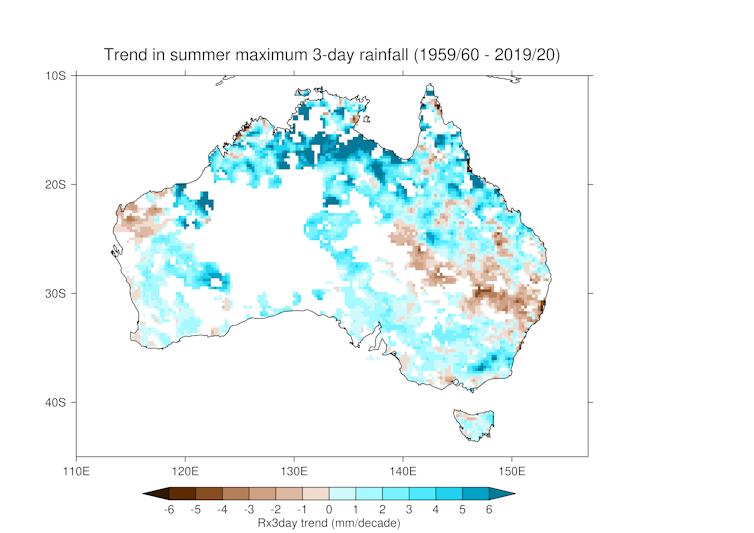
Indeed, the effect of La Niña (and its counterpart El Niño, associated with drier weather) makes identifying a climate change-related trend more difficult. In other words, while a human-induced climate change signal may be present, the naturally high variability makes it hard to spot.
The atmosphere can hold approximately 7% more moisture for every degree Celsius of global warming. However, we also need the right weather systems in place to trigger the release of moisture from the air and cause extreme rainfall. The climate change effect on these systems is uncertain.
Climate Change And Weather Systems
The severity of the flooding in southeast Queensland is partly due to a weather system called an “atmospheric river” sitting over the region for days. To make matters worse, the rain fell on an already sodden ground due to both the higher-than-average rainfall from the current La Niña, and the La Niña in the 2020-2021 summer. This made a huge difference to the scale of the floods.
We don’t fully understand how the persistence of these natural systems will change in future, but recent work shows climate change will cause long-lasting atmospheric rivers over Sydney to occur almost twice as often by the end of the 21st century. We don’t know yet if that’s also true further north of Sydney.
To complicate things further, there’s evidence to suggest climate change may be influencing the frequency, intensity and impacts of El Niño and La Niña events.
Climate change projections also suggest we may see small increases in the number of extreme one-day rainfall events which typically lead to flash flooding, in eastern Australia. But there’s a lot of uncertainty.
And worldwide, Monday’s report from the Intergovernmental Panel on Climate Change projected that global warming of 2℃ this century will bring twice as much flood damage compared to 1.5℃ warming. This jumps to 3.9 times more flood damage at 3℃ warming.
While the role of climate change is hard to pin down in Australia’s biggest floods, we know flooding often strikes our east coast. Building greater resilience to severe flooding would help lessen their impact.
Taking steps like concentrating new housing and infrastructure projects in areas above flood plains would help make us less vulnerable to these events. ![]()
Andrew King, Senior Lecturer in Climate Science, The University of Melbourne; Linden Ashcroft, Lecturer in climate science and science communication, The University of Melbourne, and Sarah Perkins-Kirkpatrick, Chief Investigator on the ARC Centre of Excellence for Climate Extremes; ARC Future Fellow, UNSW Sydney
This article is republished from The Conversation under a Creative Commons license. Read the original article.